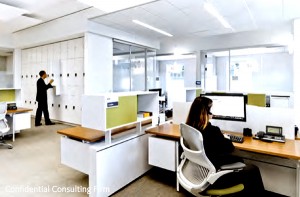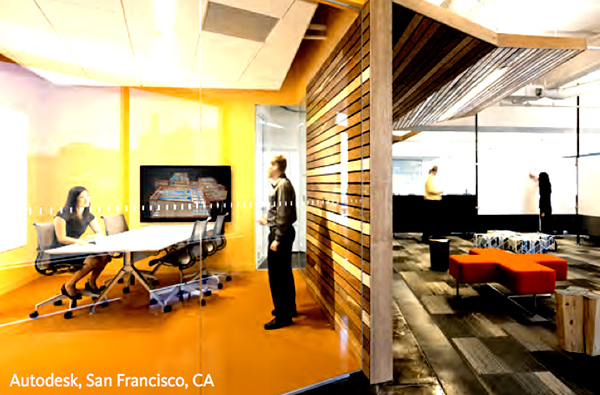Earlier this month I hosted a presentation with representatives from Gensler, the global design and architecture firm, focusing on workplace trends and the ways corporate interiors are being used to drive productivity and culture. Joining me on the panel were Kevin Heinly, Managing Director of Gensler’s San Diego Office, and Claudia Salazer, Workplace Design Director for Gensler.
The discussion centered on findings from Gensler’s 2013 U.S. Workplace Survey, which found that U.S. workers are struggling to work effectively in workplaces that compromise focus in pursuit of collaboration. The migration to the “open plan” environment is failing many employees when implemented in the absence of proper places to focus, relax and gather as teams.

According to the survey, seventy five percent of employees are struggling to work effectively, resulting in lost productivity and worker disengagement.
I have seen several local companies switch to open space, thinking it will inherently inspire communication and teamwork, only to have employees become more isolated by putting on headsets to block out adjacent noise so they can focus. (The survey notes that 69% of U.S. employees are dissatisfied with noise levels in their primary workspace.) The openness that was supposed to enhance communication and teamwork backfires when implemented without a higher offering of conference rooms, quiet zones, “huddle” rooms and private places where individuals or groups can go to concentrate.
The survey concludes that workplaces designed to enable collaboration without sacrificing employees’ ability to focus are more successful. The solution is offering more choice in the workplace to drive performance and innovation. Providing places for employees both to focus and to break out and collaborate in the workplace is most effective.

For most companies, payroll and benefits are the single highest cost, while rent is only about 4% of the total cost structure. Given the relatively small investment, companies need to be thinking more about the power they have to enhance recruitment, retention, innovation and productivity by creating the right facility for their workers. The internal rate of return on spending a bit more for the right interior characteristics and amenities is inherently high, as it has a huge impact on the quality of work being done and the organization’s ability to retain team members.
I encourage business owners and executives to be leaders in this search for balance, and to think about the future versus the past (what space can be, and needs to be for the next 5-10 years, versus what you have that was built 5-10 years ago). Because your workplace has a tremendous impact on your company’s output. Make sure that impact is a positive one.
David Marino is senior executive managing partner of Hughes Marino, a global corporate real estate advisory firm that specializes in representing tenants and buyers. Contact David at 1-844-662-6635 or david@hughesmarino.com to learn more.










